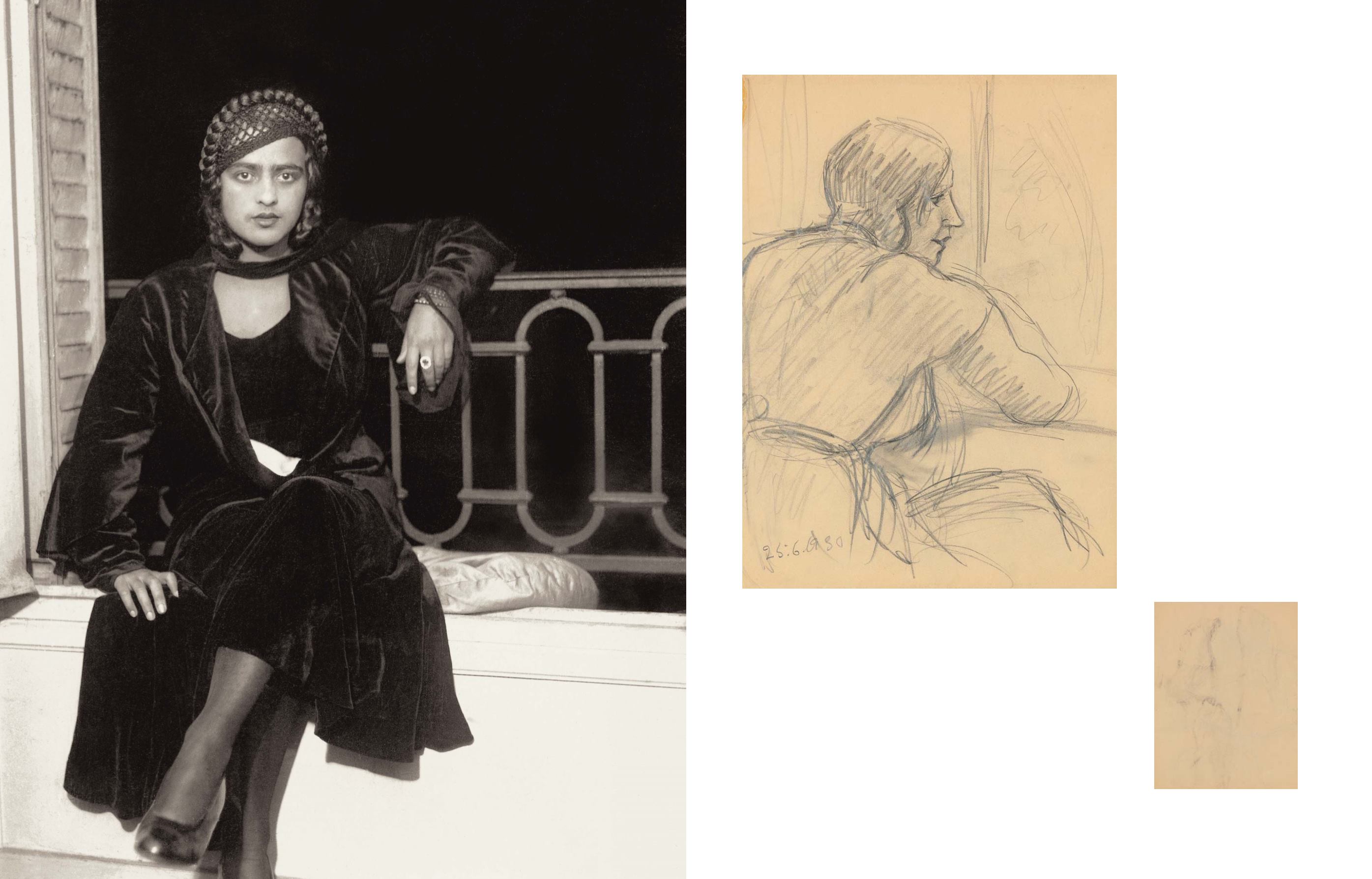

70
71
37
AMRITA SHER‒GIL
(1913 ‒ 1941)
Untitled
Dated ‘25.6.1930’ (lower left)
1930
Graphite on paper
12.25 x 9 in (31 x 22.6 cm)
Rs 25,00,000 ‒ 35,00,000
$ 37,315 ‒ 52,240
NON‒EXPORTABLE NATIONAL ART TREASURE
PROVENANCE:
Private Collection, India
“The painter in Ervin was quick to
recognize Amrita’s artistic talent,
and he guided her to move
away from the highly emotional
early paintings and to draw from
reality, emphasizing structure
rather than naturalism. Under her
uncle’s direction, her lines started
to become strong and angular,
whether in a head of Beethoven
or a self‒portrait. However she
did not give up painting water
colours, particularly of the female
figure, in an emotionally charged
and sensuous manner.” (Vivan
Sundaram ed.,
Amrita Sher‒Gil: A
Self‒portrait in Letters & Writings,
Volume 1
, New Delhi: Tulika
Books, 2010, p. xl)
Sher‒Gil
maintained
several
sketchbooks of drawings and
watercolours, and it is likely that
the present lot, made in 1930, is
from one such sketchbook. At
this time, the artist was seventeen
years old and had once again
returned to Hungary, after a year
in Paris studying at the Grand
Chaumière and the studio
of Lucien Simon at the École
Nationale des Beaux‒Arts.
recto
verso
A child prodigy in art, Amrita Sher‒Gil showed an
intense, almost obsessive, penchant for drawing and
painting from the early age of six. Sher‒Gil’s early subjects
ranged from illustrations of Hungarian fairytales during
her school years in Dunaharaszti, Hungary, to painting
impressions of women characters from films and novels.
Her talent was appreciated and encouraged by many,
including her uncle Ervin Baktay, who encouraged her to
draw from live models, such as in the present lot.
Amrita seated at a bay window, c. 1932, 11 Rue Bassano, Paris
© Vivan Sundaram/Estate of Amrita Sher‒Gil


















